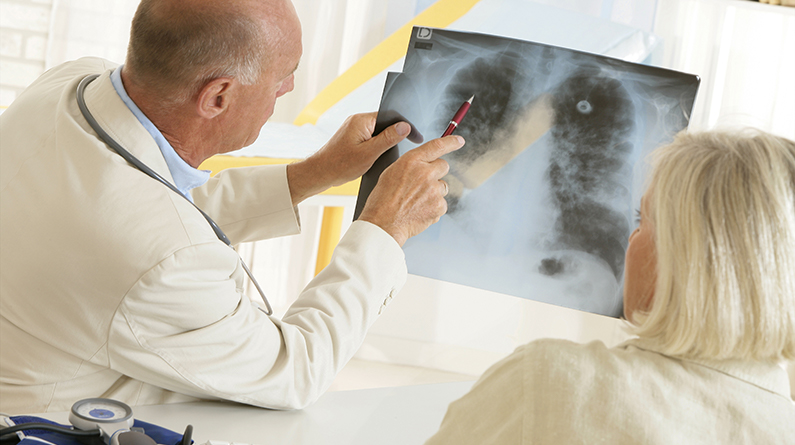Lung cancer is the leading cause of cancer deaths in the United States amoung men and women. There are some lifestyle choices you can make to try and reduce your risk of getting lung cancer. Being aware of the symptoms to look for is helpful in catching the disease early and having a better treatment outcome. For people who have a family history of cancer, screening becomes even more important, since that population is at a higher risk of developing the disease. The information below is meant to be used as a guideline. Individuals experiencing any of these symptoms should consult their physician.
Lung Cancer Risk Factors
- Smoking: Smoking is the greatest risk factor for lung cancer. Tobacco smoke causes more than 8 out of 10 lung cancer deaths. Exposure to second-hand smoke increases the risk of developing lung cancer as well.
- Chemical exposure: Some professions are regularly exposed to harmful chemicals which can lead to an increased risk.
- Diseases: Chronic Obstructive Pulmonary Disease, Pulmonary Fibrosis, and Tuberculosis place someone at higher risk for lung cancer.
- Family history: There is an increased risk when immediate family members have had the disease especially at a young age.
Read more about lung cancer risk factors.
Lung Cancer Signs and Symptoms
- A cough that does not go away
- Chest pain, made worse by deep breathing, coughing or laughing
- Hoarseness
- Weight loss and loss of appetite
- Bloody or rust colored sputum
- New onset of wheezing or shortness of breath
- Reoccurring infections such as bronchitis or pneumonia
Read more about lung cancer signs and symptoms.
Lung Cancer Screening
Patients should discuss their health history and individual risk factors with their physician to determine if lung cancer screening is recommended.



